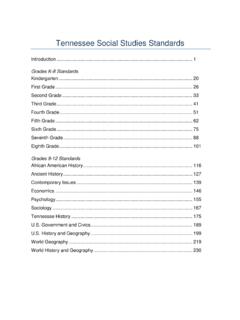Transcription of Introduction to Probability Models - University of North ...
1 Introduction to Probability ModelsEleventh EditionIntroduction to Probability ModelsEleventh EditionAMSTERDAM BOSTON HEIDELBERG LONDON NEW YORK OXFORD PARIS SAN DIEGO SAN FRANCISCO SINGAPORE SYDNEY TOKYOA cademic Press is an Imprint of ElsevierSheldon M. RossUniversity of Southern CaliforniaLos Angeles, CaliforniaAcademic Press is an imprint of ElsevierThe Boulevard, Langford Lane, Kidlington, Oxford OX5 1GB, UKRadarweg 29, PO Box 211, 1000 AE Amsterdam, The Netherlands225 Wyman Street, Waltham, MA 02451, USA525 B Street, Suite 1800, San Diego, CA 92101-4495, USAE leventh edition 2014 Tenth Edition: 2010 Ninth Edition: 2007 Eighth Edition: 2003, 2000, 1997, 1993, 1989, 1985, 1980, 1972 Copyright 2014 Elsevier Inc. All rights part of this publication may be reproduced, stored in a retrieval system or transmitted in any form or by any means electronic, mechanical, photocopying, recording or otherwise without the prior written permission of the publisher Permissions may be sought directly from Elsevier s Science & Technology Rights Department in Oxford, UK: phone (+44) (0) 1865 843830; fax (+44) (0) 1865 853333; email: Alternatively you can submit your request online by visiting the Elsevier web site at , and selecting Obtaining permission to use Elsevier responsibility is assumed by the publisher for any injury and/or damage to persons or property as a matter of products liability, negligence or otherwise, or from any use or operation of any methods, products, instructions or ideas contained in the material herein.
2 Because of rapid advances in the medical sciences, in particular, independent verification of diagnoses and drug dosages should be of Congress Cataloging-in-Publication DataRoss, Sheldon M., author. Introduction to Probability Models / by Sheldon Ross. Eleventh edition. pages cm Includes bibliographical references and index. ISBN 978-0-12-407948-9 1. Probabilities. I. Title. 2014 dc23 2013035819 British Library Cataloguing in Publication DataA catalogue record for this book is available from the British LibraryISBN: 978-0-12-407948-9 For information on all Academic Press publications visit our web site at and bound in USA14 15 16 17 18 10 9 8 7 6 5 4 3 2 1 This text is intended as an Introduction to elementary Probability theory and stochastic processes. It is particularly well suited for those wanting to see how Probability theory can be applied to the study of phenomena in fields such as engineering, computer sci-ence, management science, the physical and social sciences, and operations is generally felt that there are two approaches to the study of Probability theory.
3 One approach is heuristic and nonrigorous and attempts to develop in the student an intuitive feel for the subject that enables him or her to think probabilistically. The other approach attempts a rigorous development of Probability by using the tools of measure theory. It is the first approach that is employed in this text. However, because it is extremely important in both understanding and applying Probability theory to be able to think probabilistically, this text should also be useful to students interested primarily in the second to This EditionThe tenth edition includes new text material, examples, and exercises chosen not only for their inherent interest and applicability but also for their usefulness in strengthen-ing the reader s probabilistic knowledge and intuition. The new text material includes Section , which builds on the inclusion/exclusion identity to find the distribution of the number of events that occur; and Section on left skip free random walks, which can be used to model the fortunes of an investor (or gambler) who always invests 1 and then receives a nonnegative integral return.
4 Section has additional material on Markov chains that shows how to modify a given chain when trying to determine such things as the Probability that the chain ever enters a given class of states by some time, or the conditional distribution of the state at some time given that the class has never been entered. A new remark in Section shows that results from the classical insurance ruin model also hold in other important ruin Models . There is new material on exponential queueing Models , including, in Section , a determina-tion of the mean and variance of the number of lost customers in a busy period of a finite capacity queue, as well as the new Section on birth and death queueing Models . Section gives a new approach that can be used to simulate the exact stationary distribution of a Markov chain that satisfies a certain the newly added examples are , which is concerned with a multiple player gambling problem; , which finds the variance in the matching rounds problem; , which deals with the characteristics of a random selection from a population; and , which deals with the stationary distribution of a Markov PrefaceCourseIdeally, this text would be used in a one-year course in Probability Models .
5 Other possible courses would be a one-semester course in introductory Probability theory (involving Chapters 1 3 and parts of others) or a course in elementary stochastic processes. The textbook is designed to be flexible enough to be used in a variety of possible courses. For example, I have used Chapters 5 and 8, with smatterings from Chapters 4 and 6, as the basis of an introductory course in queueing and ExercisesMany examples are worked out throughout the text, and there are also a large number of exercises to be solved by students. More than 100 of these exercises have been starred and their solutions provided at the end of the text. These starred problems can be used for independent study and test preparation. An Instructor s Manual, contain-ing solutions to all exercises, is available free to instructors who adopt the book for 1 and 2 deal with basic ideas of Probability theory. In Chapter 1 an axiomatic framework is presented, while in Chapter 2 the important concept of a random vari-able is introduced.
6 Section gives a simple derivation of the joint distribution of the sample mean and sample variance of a normal data 3 is concerned with the subject matter of conditional Probability and con-ditional expectation. Conditioning is one of the key tools of Probability theory, and it is stressed throughout the book. When properly used, conditioning often enables us to easily solve problems that at first glance seem quite difficult. The final section of this chapter presents applications to (1) a computer list problem, (2) a random graph, and (3) the Polya urn model and its relation to the Bose-Einstein distribution. Section presents k-record values and the surprising Ignatov s Chapter 4 we come into contact with our first random, or stochastic, process, known as a Markov chain, which is widely applicable to the study of many real-world phenomena. Applications to genetics and production processes are presented. The concept of time reversibility is introduced and its usefulness illustrated.
7 Section presents an analysis, based on random walk theory, of a probabilistic algorithm for the satisfiability problem. Section deals with the mean times spent in transient states by a Markov chain. Section introduces Markov chain Monte Carlo methods. In the final section we consider a model for optimally making decisions known as a Markovian decision Chapter 5 we are concerned with a type of stochastic process known as a count-ing process. In particular, we study a kind of counting process known as a Poisson process. The intimate relationship between this process and the exponential distribu-tion is discussed. New derivations for the Poisson and nonhomogeneous Poisson processes are discussed. Examples relating to analyzing greedy algorithms, minimiz-ing highway encounters, collecting coupons, and tracking the AIDS virus, as well as Preface xiiimaterial on compound Poisson processes, are included in this chapter. Section gives a simple derivation of the convolution of exponential random 6 considers Markov chains in continuous time with an emphasis on birth and death Models .
8 Time reversibility is shown to be a useful concept, as it is in the study of discrete-time Markov chains. Section presents the computationally important technique of 7, the renewal theory chapter, is concerned with a type of counting pro-cess more general than the Poisson. By making use of renewal reward processes, limiting results are obtained and applied to various fields. Section presents new results concerning the distribution of time until a certain pattern occurs when a sequence of independent and identically distributed random variables is observed. In Section , we show how renewal theory can be used to derive both the mean and the variance of the length of time until a specified pattern appears, as well as the mean time until one of a finite number of specified patterns appears. In Section , we suppose that the random variables are equally likely to take on any of m possible values, and compute an expression for the mean time until a run of m dis-tinct values occurs.
9 In Section , we suppose the random variables are continuous and derive an expression for the mean time until a run of m consecutive increasing values 8 deals with queueing, or waiting line, theory. After some preliminaries dealing with basic cost identities and types of limiting probabilities, we consider exponential queueing Models and show how such Models can be analyzed. Included in the Models we study is the important class known as a network of queues. We then study Models in which some of the distributions are allowed to be arbitrary. Included are Section dealing with an optimization problem concerning a single server, general service time queue, and Section , concerned with a single server, general service time queue in which the arrival source is a finite number of potential 9 is concerned with reliability theory. This chapter will probably be of greatest interest to the engineer and operations researcher.
10 Section illustrates a method for determining an upper bound for the expected life of a parallel system of not necessarily independent components and Section analyzes a series structure reliability model in which components enter a state of suspended animation when one of their cohorts 10 is concerned with Brownian motion and its applications. The theory of options pricing is discussed. Also, the arbitrage theorem is presented and its rela-tionship to the duality theorem of linear programming is indicated. We show how the arbitrage theorem leads to the Black Scholes option pricing 11 deals with simulation, a powerful tool for analyzing stochastic mod-els that are analytically intractable. Methods for generating the values of arbitrarily distributed random variables are discussed, as are variance reduction methods for increasing the efficiency of the simulation. Section introduces the valuable simulation technique of importance sampling, and indicates the usefulness of tilted distributions when applying this PrefaceAcknowledgmentsWe would like to acknowledge with thanks the helpful suggestions made by the many reviewers of the text.








![arXiv:1901.02860v3 [cs.LG] 2 Jun 2019](/cache/preview/b/9/c/2/9/2/3/4/thumb-b9c292342bb76a16efe67e4fbea33de9.jpg)
